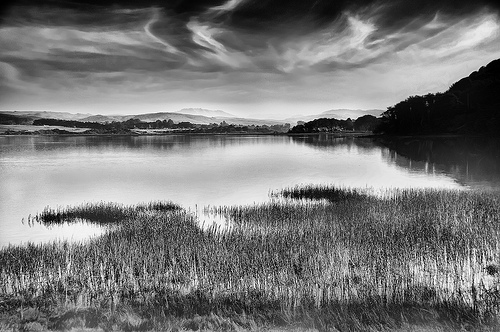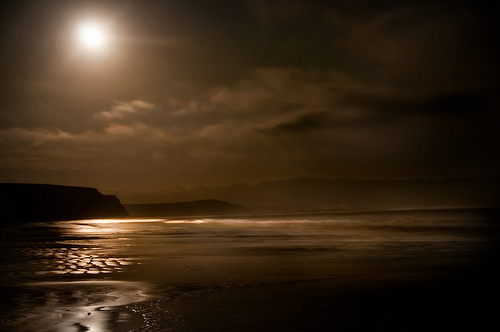Court jester or social conscience? You’ll find successful artists whose work falls into both these categories. For example, Jeff Koons is an intellectual light-weight who subcontracts out the actual construction of his work, and whose work exists as jokes to tillitate the ruling classes.
On the other hand, The Disasters of War by Goya show us, and leads us to deplore, the horrors of war. Diego Rivera’s murals speak of his radical political beliefs, while Sebastian Salgado’s photos show us exploited workers in places we will likely never visit—with the unspoken moral that this exploitation is a consequence of lifestyle choices made by those of us fortunate enough to live in a wealthy society.

Artists can also side-step the idea of contextual meaning. It’s possible to create work that is neither self-referential and joking trivia nor imbued with the gravitas of political tragedy.
Art has a middle space between buffoonery and finger-wagging morality.
There’s no social content or post-modernist wink-and-nod in the paintings of Vincent van Gogh or the photos of Edward Weston. These images are about beauty, line, form, shape and light—pure and simple. They may have been revolutionary in technique or the subject depicted—van Gogh’s brush strokes and Weston’s elegant images of toilets—but there’s absolutely no hint of social commentary or art world post-modernist games in the work of these great artists.
Real artists are not always social critics, nor are they twits.

Another question related to the role of the artist is where the artist fits into society. While early 21rst century United States is not the most rigidly class-bound society the world has ever seen—by any stretch of the imagination—it is clearly becoming more stratified into “haves” and “have nots.”
This is the basis for the rhetorical statements about the 1% (the haves) and the 99% (the have nots).
More realistically, this division should be between the .01% and the 99.99% rest of us.
In any case, for many people in many professions it is clear where they fit into the class heirarchy. Not so, for the artist who is even moderately successful.
I find that what goes with the territory is an ability to find value on a shoestring, and at the same time to be able to converse with successful professionals and top executives.
In other words, the artist is outside the normal class system, and perhaps can see the world more clearly than people who are stuck within it.
I reject utterly the role of court jester, working to enrich the art establishment and for the amusement of a few of the 1%. I also don’t feel the need to put my art in the service of my social conscience—unless by doing so I am creating better art.
But this doesn’t mean I can ignore the circumstances of the world anymore than anyone else. It’s really nothing to do with art or one’s profession. As best I can I need to live my life to help exemplify and promote the world I would like to see.
About the images: I shot these two images during a recent workshop I conducted at the Point Reyes Field Institute, in Point Reyes National Seashore, California. In both cases, my idea was to press the boundaries of photography—in Tomales Bay by creating an image that looks like a drypoint etching, and in Drakes Bay by Moonlight by echoing a 19th century seascape painting—without leaving the formal boundaries of digital photography.
Tomales Bay is toned as a conventional monochromatic photo. In other words, the color information in this image is no longer relevant. Drakes Bay by Moonlight is a subdued color image—and I resisted the temptation to add varnish and impasto painting effects to it in post-production.
Pingback: Agaves
Pingback: Out of Complex Comes Simple: The Art of Harold Davis - 1-954-270-7404
Pingback: Van Gogh’s Church at Auvers
Harold Davis
9 Jun 2014Received the following piece of lunacy by email today: “My name is Fahad and I am from the online art startup Artsy. I’ve looked through your site, digitalfieldguide.com and I noticed that you link to Wikipedia as a reference for Jeff Koons. I’d suggest the Artsy Jeff Koons page as a more current alternative.”
Shows how little people who troll the Internet with SEO on their mind look at (or understand) the context of what they are reading. In fact, Artsy is emblematic of just what I was complaining of in my blog story, is very crass and commercial, and wouldn’t know real art if it bit them.